I earn commissions from my affiliated links. Please see my disclosure policy for more details.
DIY Practical Life materials are essential components of Montessori education, as they help children develop everyday life skills and foster independence. Practical Life is the easiest area of the classroom to do it yourself. Many materials you likely already own can be accessed from your home for the activity.

Why is Montessori Practical Life Important?
Montessori Practical Life activities hold great significance in a child's development and are considered essential in Montessori education. Here are several reasons why Montessori Practical Life is important:
- Development of Independence: Practical Life activities empower children to become independent and self-reliant. Through tasks like dressing themselves, preparing food, or cleaning, children gain the skills and confidence to take care of themselves and their environment.
- Enhancement of Fine Motor Skills: Practical Life activities involve precise movements and coordination of small muscles. By practicing tasks like pouring, spooning, or using tweezers, children refine their fine motor skills, which are crucial for future academic tasks like writing.
- Development of Concentration and Focus: Practical Life activities require children to concentrate and focus on the task at hand. Through activities that involve sequencing, organizing, and paying attention to detail, children develop the ability to sustain their attention for more extended periods.
- Refinement of Gross Motor Skills: Alongside fine motor skills, Practical Life activities also help in developing gross motor skills. Activities like sweeping, carrying trays, or walking gracefully promote coordination, balance, and control over the whole body.
- Promotion of Order and Organization: Practical Life activities emphasize order and organization. Children learn to follow a sequence of steps, put materials back in their place, and maintain a clean and tidy environment. These skills contribute to a sense of orderliness and promote a structured mindset.
- Development of Concentration and Inner Discipline: Practical Life activities encourage children to engage in purposeful work that requires focus and discipline. Through repetitive actions and attention to detail, children cultivate concentration and inner discipline, which are valuable life skills.
- Enhancement of Problem-Solving Skills: Practical Life activities often involve problem-solving and decision-making. Children learn to analyze situations, make choices, and find solutions to challenges they encounter while engaging in everyday tasks.
- Encouragement of Care for the Environment: Practical Life activities foster a sense of responsibility and care for the environment. Children learn to take care of their surroundings, respect materials, conserve resources, and contribute to maintaining a clean and orderly environment.
- Preparation for Daily Life Skills: Practical Life activities directly prepare children for essential daily life skills they will need as they grow. Skills like dressing, cooking, cleaning, and personal hygiene are integrated into the curriculum, equipping children with practical skills they will utilize throughout their lives.
- Promotion of Emotional and Social Development: Practical Life activities provide opportunities for children to develop emotional regulation, patience, and social skills. Engaging in tasks with others encourages cooperation, communication, and respect for one another.
Overall, Montessori Practical Life activities provide a holistic and integrated approach to learning, addressing physical, cognitive, emotional, and social aspects of a child's development. These activities lay a foundation for lifelong skills and nurture a sense of confidence, independence, and responsibility.
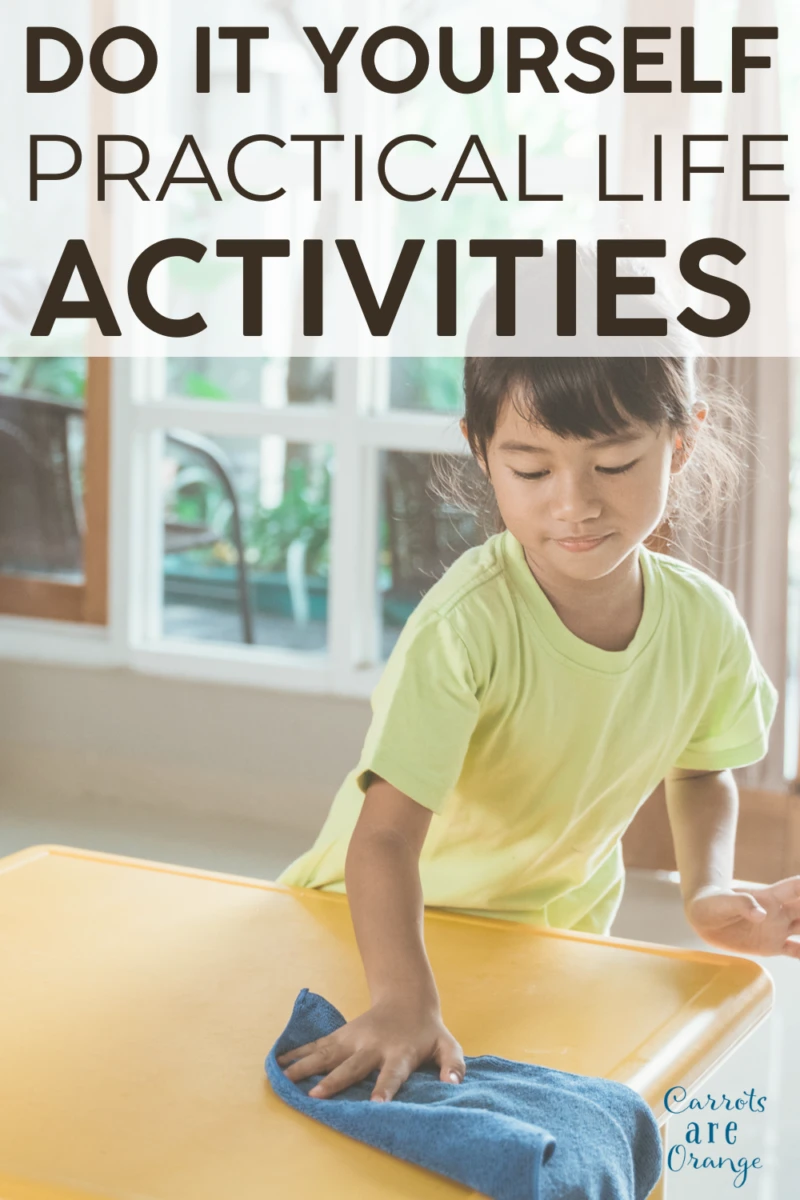
DIY Montessori Practical Life Materials
#1 – Pouring Station
Set up a pouring station with a tray, two pitchers or jugs of different sizes, and a sponge or cloth. Children can practice pouring water from one container to another, developing hand-eye coordination and control.
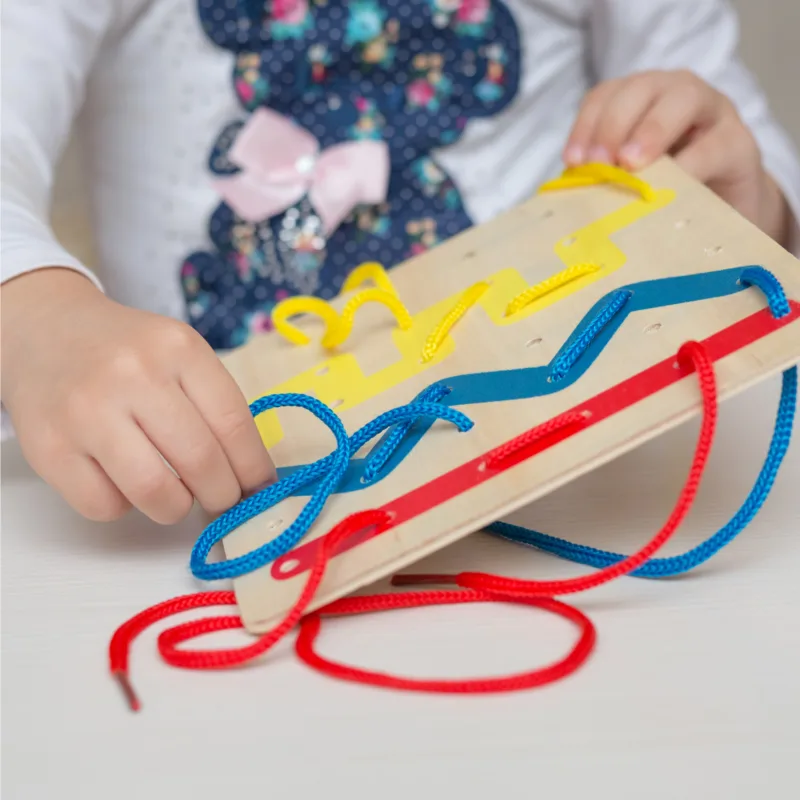
#2 – Dressing Frames
Create dressing frames by attaching buttons, snaps, zippers, and hooks onto fabric squares or wooden frames. Children can practice dressing and undressing, refining fine motor skills and independence.
#3 – Washing Station
Set up a washing station with a basin, water, soap, and a towel. Children can wash small items like dishes or toys, learn about cleanliness, and develop handwashing skills.

#4 – Sewing Cards
Sewing is a key component of the Montessori Practical Life Care of Self and Care of Environment lessons. Sewing is a practical life skill that children can apply in their daily lives.
By learning basic sewing techniques, children gain the ability to mend clothes, sew buttons, and perform simple alterations, fostering a sense of self-reliance and resourcefulness.
Make sewing cards by cutting out shapes from cardboard or cardstock and then punching holes around the edges. Children can practice threading a needle and sewing along the holes, improving hand-eye coordination and fine motor skills.
I have made a few sewing cards over the years. Below are a few examples:
#5 – Food Preparation
Involve children in simple food preparation activities like slicing fruits or vegetables, spreading butter on bread, or pouring ingredients into bowls. Ensure proper safety measures and age-appropriate tasks.
#6 – Plant Watering
When it comes to watering plants, the Montessori approach encourages children to develop responsibility, care, and precision in their actions. Below I included a basic approach to watering plants with kids. This approach can be applied to many DIY practical life activities with kids.
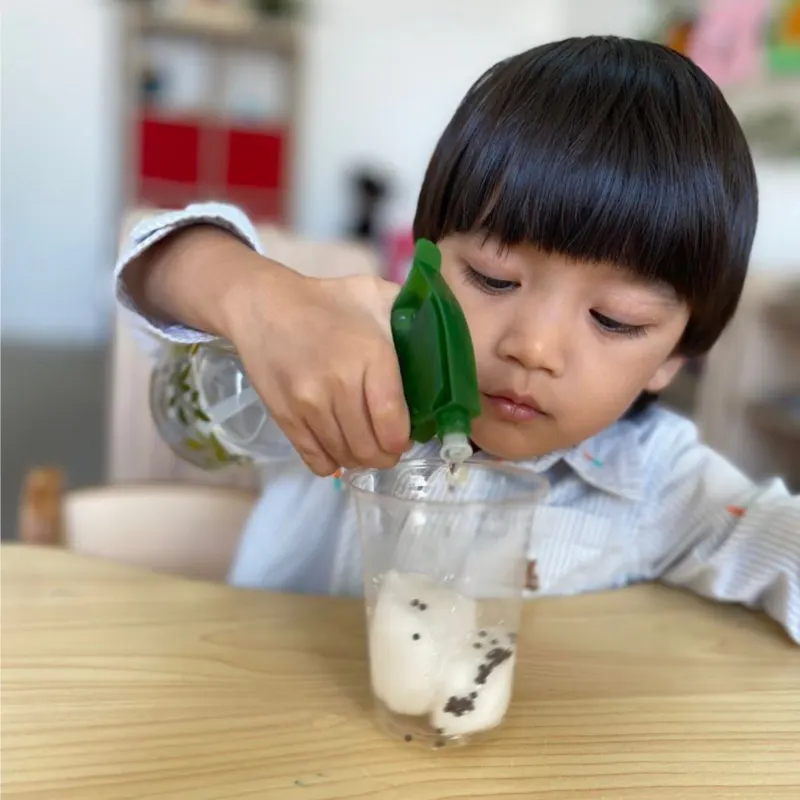
- Preparation: Gather the necessary materials, including a watering can, a small pitcher or jug, and a tray or basin to catch any excess water.
- Observation: Begin by inviting the child to observe the plants and assess their watering needs. Discuss signs of dryness, such as drooping leaves or dry soil, and explain the importance of providing the right amount of water for the plant's health.
- Fill the Watering Can: Guide the child in filling the watering can with an appropriate amount of water. Discuss the importance of not overfilling or underfilling the can, finding a balance that will provide enough moisture without overwhelming the plants.
- Move with Care: Encourage the child to walk carefully, holding the watering can steadily to prevent spillage. Emphasize the need to move slowly and mindfully to avoid disturbing other plants or creating a mess.
- Positioning: Assist the child in positioning themselves near the plant that needs watering. Encourage them to get closer to the plant's level, allowing for a more accurate and controlled watering process.
- Pour with Control: Demonstrate and guide the child in gently pouring the water at the base of the plant, aiming to moisten the soil without drenching the leaves excessively. Emphasize the importance of a slow and controlled pour to ensure the water reaches the roots effectively.
- Observe and Adjust: After watering, encourage the child to observe the plant and the surrounding soil, noting any water runoff or signs of saturation. If needed, guide them in using a cloth or sponge to soak up excess water, promoting a sense of responsibility for maintaining a suitable environment for the plants.
- Clean-Up: Teach the child the importance of cleaning up after watering. Assist them in emptying any remaining water from the watering can into a designated container, and ensure they wipe down the can, removing any dirt or residue.
#7 – Flower Arranging
Provide children with a variety of flowers, vases, and gardening tools. They can arrange flowers, trim stems, and care for plants, learning about aesthetics, nature, and responsibility.
#8 – Cleaning
Create child-sized cleaning tools like a mini broom, dustpan, mop, or spray bottle. Children can assist in cleaning activities, promoting responsibility, and developing practical skills.
Remember as with any Montessori work, help the child complete the work cycle from preparation to putting away supplies. Maybe add a few fun clean-up songs to engage the child.
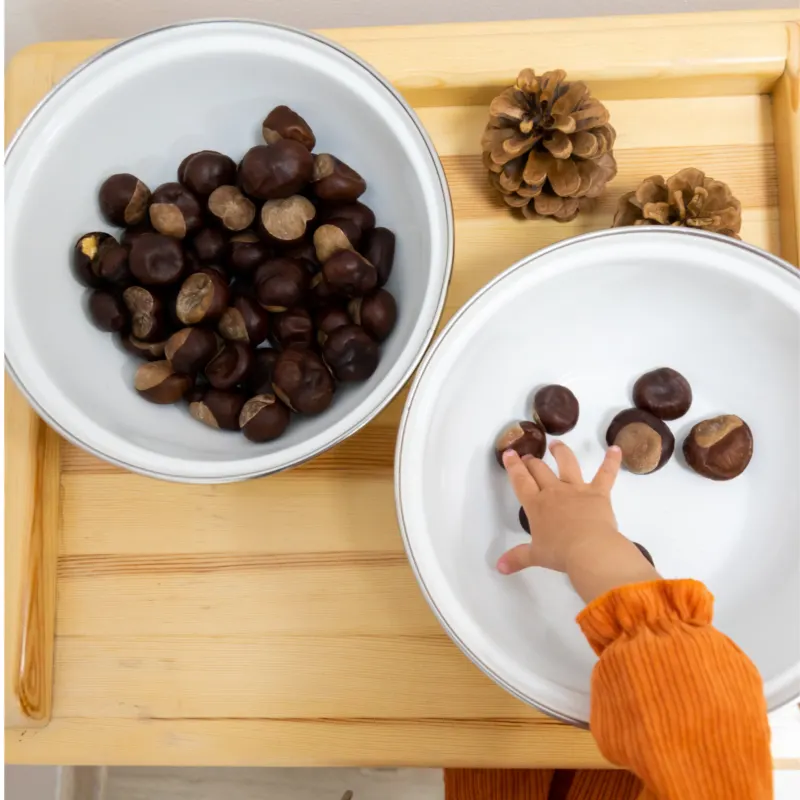
#9 – Sorting and Transferring
Set up sorting and transferring activities using items like beans, buttons, or beads and small containers. Children can sort, scoop, pour, and transfer objects, enhancing hand-eye coordination and concentration.
#10 – Table Setting
Prepare a tray with a placemat, cutlery, plates, and cups. Children can practice setting the table for meals, learning about table manners, and independent mealtime routines.
#11 – Gardening
Provide child-sized gardening tools like a small shovel, rake, and watering can. Children can engage in gardening activities, learning about plants, nature, and responsibility for the environment.
Providing Montessori DIY Practical Life activities to your children is a great way to foster independence, self-confidence, and motor skills. With careful guidance from parents or teachers, children will be able to develop the self-control, problem-solving ability, and grace and courtesy that are key facets of the Montessori approach.
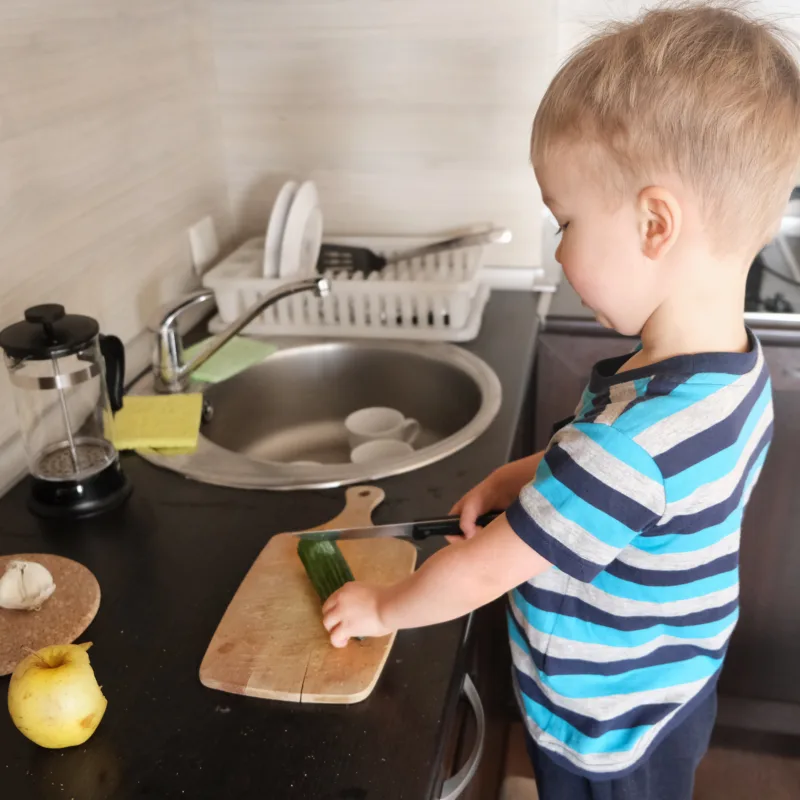
You don’t need a lot of resources or access to an expensive classroom; all you need is the motivation to provide meaningful experiences for your children. Doing this can actually be quite fun for both the adult and student as you become creative in designing a variety of practical life activities that are interesting and engaging.
In addition to introducing topics such as basic food preparation skills, errand running practice, or even sewing projects with buttons and fabric swatches, exploring different types of fine materials like clay and beads also go a long way towards providing crucial tactile feedback.
By taking an active interest in your child’s development by guiding them through Montessori DIY Practical Life activities – you just might end up having some fun yourself while making it more enjoyable for them too!
